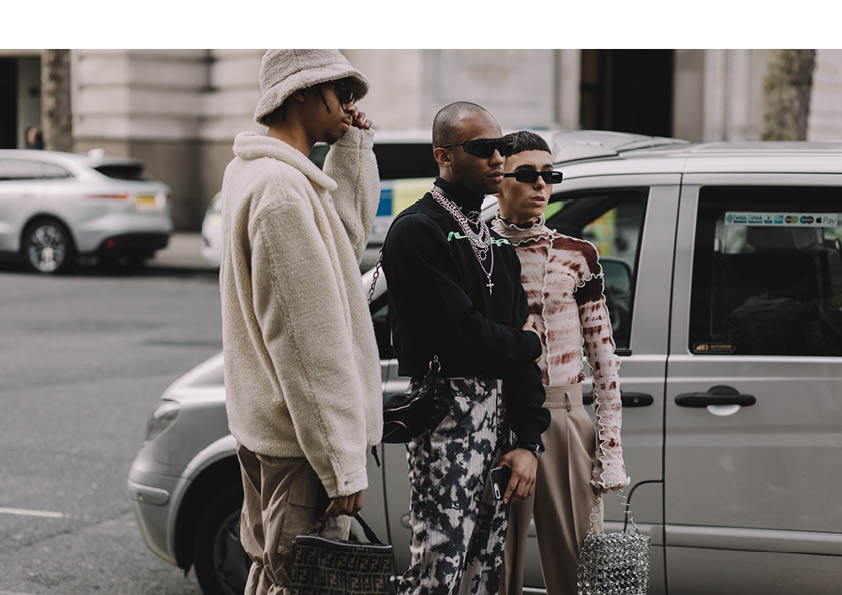Things have not been looking good for Berlin as the ultimate German fashion location for a long time: the decline in interest in “Berlin Fashion Week” has been apparent for several seasons now. Falling visitor numbers, insolvency applications and dissatisfied exhibitors are just some of the reasons. And now, a few weeks ago, it was announced that the leading fashion tradeshow Premium would be closing its doors. Somehow it was foreseeable. Ever since the departure of Anita Tillmann, the leading lady of the Berlin fashion scene for over two decades, people have been wondering whether her Premium would survive as the leading trade fair on the Spree. Especially after the unfortunate attempts to relaunch in Frankfurt and the confused return to Berlin via Messe Berlin back to the Gleisdreieck in the summer of 2023. Not to mention the obvious pressure from investor Clarion, who came on board in 2018.
Tradeshows and Catwalks: Berlin could neither
It has been more than 10 years since Bread & Butter last opened at Berlin Tempelhof Airport. In 2015, it closed its doors for good. Frustration spread through Berlin’s fashion community: The concept was cool, the atmosphere always exuberant. But the party came to a bitter end. A lot has happened since then, and now Premium Berlin, the fair that was less cool but had achieved a similar status, has also had to close. It had previously wanted to move to Frankfurt, which surprised many. After all, Berlin has always been called the „Mecca of creativity and innovation”. Whether this is true or not is a moot point.
In principle, changing locations is not a big issue in the trade fair landscape. Before Berlin, everyone was in Cologne and Düsseldorf, before that in Munich and they tried moving on to Frankfurt. The caravan moved on steadily. “The move to Frankfurt in 2021 {was} a big and important step for us and our customers. After 18 years in Berlin, it {was} time to try something new and make a statement,” said Anita Tillmann, former Managing Partner of the Premium Group back. When asked why they are moving from Berlin to Frankfurt, she replied: “Frankfurt is a new, fresh location for the fashion industry – future-proof and sexy. We have a great opportunity to redefine all formats and set new thematic focuses. We will make the tried and tested even better and throw outdated concepts overboard.” In short: same old story. The fact is, Berlin has always claimed to be a fashion city with international aspirations. But that never happened. In the end, the title sponsor of Berlin Fashion Week, Mercedes-Benz, withdrew long ago, the Vogue Salon was cancelled, as was the Berlin Salon. The fashion week had no continuity and was rather provisional. It didn’t matter where the catwalk shows took place. After all, trade fairs such as Premium were always economically important for Berlin. The catwalk is a decorative accessory and back-ground for beautiful pictures of the influencers who adorned the front rows. Whether this can work without the pulling power of trade fairs is questionable. Especially as the fashion industry is currently struggling with completely different problems caused by the sharp drop in sales as a result of the shutdown. Without trade fairs, there is a lack of business deals and the trade shows are getting smaller and smaller – and not just because of corona.
A lull in the show calendar, sparsely populated défilés, deadlock at the trade fairs. But the question of location could also have played a role in the move. The Premium site has been sold and the trade fair would have had to look for a new exhibition venue in Berlin this summer. Neonyt was last held at the former Tempelhof airport, albeit together with the Panorama trade fair, which had to file for insolvency in February 2020. The location was too big for Neonyt alone. And although Berlin sees its core competences in creativity and internationality, the fashion week was anything but global. This could be due to the fact that Fashion Week had to share its date in the first week of July with the haute couture shows in Paris, which meant that many international buyers and editors were unable to attend. Buyers and editors opted for the event in Paris rather than traveling to Berlin.
Berlin was always a marketing event. The order business flourished later in Düsseldorf. Recently, international brands have found fewer and fewer partners to get a foot in the door of the German market. As a result, they have increasingly stayed away from Berlin. The withdrawal of catwalk formats, especially in the IMG tent at the Brandenburg Gate, as well as the stumbling of small local events have also had a huge impact on Berlin’s image. For the city’s inhabitants, fashion has always been more of a nuisance than an economic factor. Even the Senate won’t change that.
Newsflash: You can also order in the showroom. At least German manufacturers can now admit this in peace. Appearances at Berlin trade fairs have always been an expensive and prestigious pleasure.
The Premium Group puts it in a nutshell: “This is the end of an era. Nothing will ever be the same again. Is that good or bad? No one really knows. Although the decision to close Premium marks the end of an era, it does not mean the end of the fashion world, but rather the opening of new doors and opportunities, according to a statement from Berlin fashion makers. But is Berlin even capable of fashion?
More Personality than Perspective?
Brands such as Richert Beil and Namilia are long seen as beacons of hope in the Berlin fashion scene. Others, such as Gmbh and Ottolinger, have long since turned their backs on Berlin fashion. Although they originated in Berlin, they have found their way onto the international catwalks of Paris and New York. FYI: that doesn’t make brands like Richert Beil any less successful. Quite the opposite. The designer duo seemingly effortlessly developed into the enfant terrible of the Berlin fashion scene, not least thanks to their trademark craftsmanship, quirky humor and political standing.
And away from the catwalks: everyone knows Berlin street style. Berlin is often characterized by an alternative and unconventional fashion scene that differs from the traditional fashion metropolises. The city is known for its diversity and openness, and this is also reflected in its fashion. Different styles, subcultures and innovative approaches come together here. What is beautiful. But does that also mean being fashionable? Some critics claim that, compared to established fashion metropolises such as Paris or Milan, the Berlin fashion scene and their trade shows are somewhat disorganised and lacks structure, which could affect its global perception.
So it’s finally over. Although it was actually over in 2019. The Premium Group did not succeed in establishing Berlin as a fashion capital, and neither did the Senate with its belated subsidies.
It will be interesting to see how the organisers in Düsseldorf and Munich react. Or will Frankfurt catch a whiff of the morning air again? Rather unlikely.
As turbulent as developments have been in recent years, disillusionment and fatigue are likely to spread slowly but surely throughout the industry and the trade. Not least because it is becoming increasingly clear that, in the midst of the consumer and energy crises (to name but a few), business in the fashion trade will remain poor in the medium to long term. Only luxury retailers and discounters are likely to remain unaffected.
But what Berlin definitely lacks: It makes up for in personality.
Credit Header Image: Namilia SS24




























